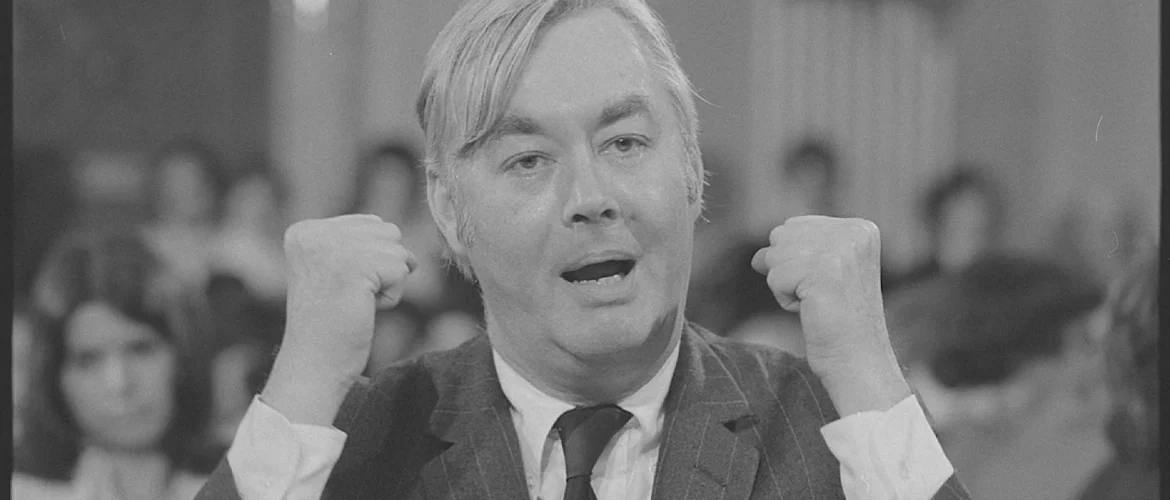Figure 1.1. Daniel Patrick Moynihan speaking at the Senate Committee on Foreign Relations, 1976. (Photo Credit: Marion S. Trikosko/The U.S. Library of Congress)
By Rasul A. Mowatt, Department Head and Professor, North Carolina State University
Policies are the hidden socio-political forces that create the realities within any given geographic specificity of the environment, particularly one that is the city. And it is the interplay with those forces that we produce the cultures sustain our lives as we live under the ramifications of those policies. Depending on which nation-state we live in, many of can name the personalities in the political arena that we have steered to gravitate towards, either in admiration or in disgust. But most of us stop there, seldom peering underneath the hood and behind the veil of how a government actually governs. I would argue that the vast majority of us cannot name five policies of our nation-state, much less name campaigns, slogans, or reports from policy advisors submitted to heads of state, parliaments, senates, and other representatives. The focus of this policy brief is a discussion of one such socio-political force of a policy, among other forces, enacted during the Nixon Presidency (1969 to 1974) in the United States called “benign neglect” and the ways that it reverberates to the present-day.
The United States’ social and political circumstances of the 1960s and 1970s is common subject of discussion in political science and historical circles. It was within this period that a noted federal report was commissioned, the Outdoor Recreation Resource Review Commission (ORRRC) of 1962. Examining the past and future of outdoor recreation (until the year 2000), it was an investigation into the activities of a public in the “out-of-doors”, while unofficially, it was a reporting of what the racially segregated public was engaged in. The Commission was composed of eight members of the U.S. Congress, and the seven private citizens, one of whom would serve as chair of the commission, all appointed by the President.
The President was John F. Kennedy and the citizen chair was Laurence Rockefeller, the fourth child of the one and only, John D. Rockefeller (Rockefeller, 1962). The Commission set out to create an inventory of all non-urban public recreation areas, to evaluate use, capacity, and development potential. The Commission’s Advisory Council of 25 more individuals, represented interests in business, conservation, grazing, labor, mining, recreation, and timber, with clearly far more extractive industries were part of the body that set the stage of modern outdoor recreation. Also, the National Recreation Survey was conducted, asking some 16,000 respondents about their demographic background, their present outdoor engagement, their future outdoor engagement interest, and any hindrances they could foresee to that future engagement.
In the final ORRRC report (Report 22), Hauser (1962) stated that “non-white (all Black) participation in these activities is relativelylow apparently by reason of their high cost or the unavailability to the individual of suitable facilities” (pp. 56-57). And, “the multivariate analysis indicates that [Black people] are less likely to take a vacation trip than White people with the same income and vacation privileges. The racial differences appear quite substantial…and are statistically significant” (ORRRC Study Report, 1962, p. 42). But this was what many of us as researchers have chosen to extract from this report, unwittingly, a synthesis and interpretation of the findings of the survey (Floyd & Mowatt, 2014; Reid & Floyd, 1990; Stodolska, 2010). The report itself, from its chairman was about creating the outdoor recreation industry, and that too merits its own discussion (Glassberg, 2022). This pattern of findings would definitively set the stage and focus of studies on Race and leisure in the late 1970s through the 1990s, while still forming the basis of ethnicity and marginality driven research in any nation-state in the present.
Why does x population not engage in y activity? How many of x population engages in y activity? How can we get x population to engage in more y activity?
The changing nature of work and work pay in from the 1950s to the 1960s meant a change in time and affordability of populations in the working classes to enjoy leisure time. The report alongside other legislation expanded the offerings in recreation spaces while also tackling racial segregation. The work of the ORRRC report of 1962 occurred during the same era as the Civil Rights Act of 1957 (secure and protect civil rights), the Civil Rights Act of 1960 (enforcement of constitutional rights), Civil Rights Act of 1964 (enforce the right to vote; relief against discrimination in public spaces and employment), Voting Rights Act of 1965 (prohibition of racial discrimination in voting), and the Civil Rights Act of 1968 (penalties against violence; protection in housing; recognition of indigenous populations as citizens). Thus, the ORRRC’s final report of not addressing a history of racially segregated recreation spaces, the provision of programs for a racially diverse populace, and the lack of representation on the Commission and Advisory Council of everyday people, much less various non-White populations was telling.
But what was it telling?
A name for that would not come into existence until January 16th, 1970, in a memo to the then 37th President, Richard Milhous Nixon by his Urban Affairs counselor Daniel Patrick Moynihan who proposed, “the time may [has] come when the issue of race could benefit from a period of ‘benign neglect’”. This is the same Moynihan that published The Negro Family: The Case for National Action in 1965 that provided us with such socially devastating classic hits as: the never-ending “the cycle of poverty” v. poverty is produced by wealth accumulation in capitalism; the problems with “welfare programs” as a disintegrator of the Black family due to dependency v. government subsidies and loan forgiveness to businesses and corporations that create dependency; the problems of the Black “female-headed household” v. this family structure had been a normal part of Black households (and other households) for a century without scrutiny; the delinquency and “absentee fathers” v. over-policing of Black and Brown communities (Lindsay, 1970).
And while this can be perceived as a uniquely United States’ based discussion, I would digress to ask one’s self how many times have they used “the cycle of poverty” in their own discussions or how often do they perceive of x racially diverse population and the household structure as an explanation. The Negro Family report was nearly singlehandedly responsible for President Lyndon Johnson’s “War on Poverty”. The same Moynihan that parlayed his “talents” to work for four Presidencies, the Presidency of Gerald Ford was his fourth and final official service, this time as an Ambassador to the United Nations in 1975.
Ultimately, Black people are pathological and responsible for their own social conditions according to Moynihan in explaining “benign neglect” (Scott, 1996). Moynihan (1970) was up for round two of unleashing another “damage thesis” onto us, with a third to occur towards the end of his career that outright reframed his judgment of these populations as deviant (Moynihan, 1993).Eventually leaked to the United States press by March 1970, particularly Black citizenry learned that their government would take a laissez-faire approach to the Black plight throughout the various inner cities of the nation in the height of civil unrest. This apathetic attitude towards fellow U.S. citizens led to cataclysmic consequences and defanged all of the civil rights-based legislation that came before it.
In practical terms, the Moynihan doctrine put forth the idea that the “Great Society” initiatives of the 1960s, designed to improve education, poverty and revive urban areas, and indirectly, the buried findings of ORRRC report, inversely created an overreliance on the government on behalf of poverty-stricken Black folk. The Nixon administration’s noninterventionist policies towards racialized populations during the early 1970s, specifically in cities like New York, Newark, Philadelphia, Chicago, etc., contingently led to dilapidation. Neighborhoods were ungroomed by city services, sanitation departments were literally using neighborhoods as a dumping zone, and emergency services like ambulances and the fire department were defunded, all because of Moynihan’s “planned shrinkage” (Starr, 1966; Wallace & Wallace, 1998). A supposition that a strategy of disinvestment would be the solution to helping communities that were already depleted.
But what the two works of Moynihan, The Negro Family and “benign neglect”, really did was to present Black populations, specifically Black families, but also any racialized and disposable population as objects of study and knowledge, an intellectual, academic, and journalistic commodity but as constituents, citizen, and populations deserving of action and care.
Alterman (2017) suggested that “benign neglect” has been the U.S. approach to work with Arab nations in the Gulf and Middle East regions across the three recent Presidencies, building emotional ties with no tangible, infrastructural-related ties (“proxies of commitment than actual commitment”). While Petersen (1973) drew from a speech by Nixon in 1969 that outlines a “benign neglect”, in which necessary aid was to be replaced by regulated trade, as the approach to all of Latin America after the failures of another son of Rockefeller patriarch, this time from then Governor of New York and soon-to-be Vice-President, Nelson Rockefeller. And lastly, El-Khawas (1974) argued that another member of the Nixon administration, Henry Kissinger in his role as the U.S. Secretary of State set the tone for the entire continent of Africa, “unimportant and remote” and there was a need to ignore the activities of the then Apartheid regime of the Republic of South Africa.
Over the span of nine pages, this is what was lightly and gently suggested by Moynihan. It was supported by a skewed, nondescript, and selective set of statistics on a graph as an addendum (you know, to provide indisputable empirical evidence, “facts”). But the effects of “benign neglect” were undeniably far from being light. It is not a far stretch of the imagination to suggest that the ways we deal with Race in policy, practice, and research related to leisure has also been influenced by “benign neglect”, acknowledging the presence of populations but utterly denying (through study on and advocacy against) the forces that bear upon them.
References
Alterman, J. B. (2017, November 27). Benign neglect. Center for Strategic & International Studies. https://www.csis.org/analysis/benign-neglect
El-Khawas, M. A. (1974). Kissinger on Africa: Benign Neglect? A Current Bibliography on African Affairs, 7(1), 3-12. https://doi.org/10.1177/001132557400700103
Floyd, M. F., & Mowatt, R. A. (2014). Leisure and African Americans: A Historical Overview. In M. Stodolska, M. Floyd, K. J. Shinew, & G. J. Walker (Eds.), Race, ethnicity, and leisure (pp. 53-74). Champaign, IL: Human Kinetics.
Glassberg, D. (2022). Laurance S. Rockefeller and the Outdoor Recreation Resources Review Commission: Race, recreation, and the National Parks. Rockefeller Archive Center Collection. Amherst, MA: University of Massachusetts.
Hauser, P. (1962). Demographic and ecological changes as factors in outdoor recreation (pp. 27-59). Washington: Government Printing Office, ORRC Report 22.
Lindsey, K. (1970). The Black Woman as a Woman. In T. C. Bambara (Ed.), The Black Woman: An Anthology (pp. 103–108). New York: Washington Square Press.
Mowatt, R. A. (2020). A people’s history of leisure studies: The Great Race, the National Park Service, and the U.S. Forest Service. Journal of Parks and Recreation Administration, 38(3), 152-172. 10.18666/JPRA-2019-9674
Moynihan, D. P. (1965). The Negro Family: The Case for National Action. Washington, D.C.: Office of Policy Planning and Research, United States Department of Labor.
Moynihan, D.P. (January 16, 1970). Memorandum for the President. Washington, D.C.: The White House.
Moynihan, D. P. (1993). Defining deviancy down. The American Scholar, 62(1), 17–30. http://www.jstor.org/stable/41212064
ORRRC Study Report 20. (1962). Participation in Outdoor Recreation: Factors Affecting Demand Among American Adults. Report to the ORRRC by Eva Mueller and Gerald Gurin, assisted by Margaret Wood, Survey Research Center, University of Michigan. Washington, DC: United States Department of the Interior.
Petersen, G. H. (1973). Latin America: Benign Neglect is not enough. Foreign Affairs, 51(3), 598–607. https://doi.org/10.2307/20038003
Rockefeller, L. S. (1962, January). Outdoor Recreation for America: A report to the President and to the Congress by the Outdoor Recreation Resources Review Commission. Harpers Ferry: National Park Service Archives.
Reid, L. M., & Floyd, M. F. (1990). Implementation of the recommendations of the President’s Commission on Americans Outdoors. Contributions of Social Sciences to Multiple-use Management: An Update, 196, 92.
Scott, D. M. (1996). The politics of pathology: The ideological origins of the Moynihan controversy. Journal of Policy History, 8(1), 81–105. https://doi.org/10.1017/S0898030600005042.
Starr, R. (1966). The urban choices: The city and its critics. Penguin.
Stodolska, M. (2018). Research on race, ethnicity, immigration, and leisure: Have we missed the boat?. Leisure Sciences, 40(1-2), 43-53.
Wallace, D. & Wallace, R. (1998). A plague on your houses: How New York was burned down and national public health crumbled. London, UK: Verso.





Leave a Comment